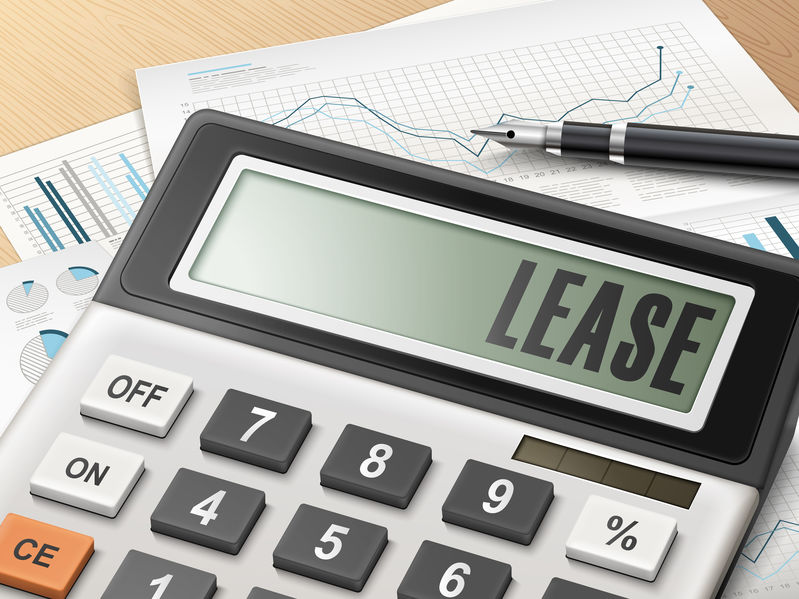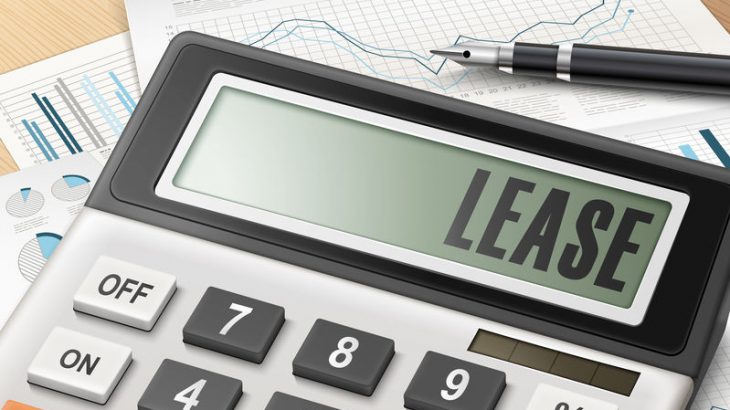FRS 116 Leases and its Tax Implications 《财务报告准则第116号》租契及其税务影响
FRS 116 LEASE ACCOUNTING CHANGES 《财务报告准则第116号》租赁会计变更
There is good news for lessors – lessor accounting is substantially unchanged from current accounting. 对于出租人来说,有一个好消息——出租人的会计核算与现行会计核算基本保持不变。
Lessees, on the other hand, bear the brunt of the changes as most leases will now be recognised on their balance sheets as a right-of-use (ROU) asset with a related lease liability. Importantly, companies will need to focus on whether an arrangement contains a lease or a service agreement because there are significant differences in the accounting. Judgement may be required in applying the definition of a lease to certain arrangements, particularly those that include significant services. 另一方面,承租人则首当其冲受到这些变化的影响,因为大多数租赁现在将在资产负债表上确认为具有相关租赁负债的使用权(ROU)资产。重要的是,公司将需要关注一项安排是否包含租赁或服务协议,因为在会计上存在重大差异。在将租赁的定义适用于某些安排,特别是包括重要服务的安排时,可能需要作出判断。
Both lessees and lessors will be subject to additional and enhanced disclosure requirements. 承租人和出租人都将受到额外的和加强的披露要求。
Determining if an arrangement constitutes a lease 决定一项安排是否构成租赁
For an arrangement to constitute a lease under the new FRS 116, it is critical to consider if the contract conveys the right to control the use of an identified asset for a period of time in exchange for consideration. 对于根据新的《财务报告准则第116号》构成租赁的安排,关键是要考虑合同是否转让了在一段时间内控制已确认资产使用的权利,以换取对价。
To assess whether a contract conveys the right to control the use of an identified asset for a period of time, companies will need to assess whether, throughout the period of use, the customer has both the right to obtain substantially all of the economic benefits from use of the identified asset and the right to direct the use of the identified asset. In contracts that include significant services, determining whether the contract conveys the right to direct the use of an identified asset will require judgement and may pose challenges to companies. 为了评估合同是否在一段时间内转让了控制已确认资产使用的权利,公司将需要评估在整个使用期内,客户既有权从已确认资产的使用中获得实质上所有的经济利益,也有权指导已确认资产的使用。在包括重大服务的合同中,确定合同是否转让了直接使用已确认资产的权利,需要作出判断,并可能对公司构成挑战。
Lease and non-lease components 租赁和非租赁部分
Within a contract, lease and non-lease components are required to be accounted separately, unless companies apply the practical expedient to combine both components. Election applies to the entire class of underlying assets. The consideration is then allocated based on each component’s relative standalone selling price (if the price is not readily available, an estimate should be used by maximising observable inputs). 在合同中,租赁和非租赁部分必须分开核算,除非公司采取实际的权宜之计将两者合并。选择适用于所有类别的基础资产。然后,根据每个组件的相对独立销售价格(如果价格不容易获得,则应通过最大化可观察的输入来使用估计值)分配对价。
Identifying non-lease components of contracts may change practice for some lessees and more robust processes will need to be put in place to identify the lease and non-lease components of contracts. 确定合同的非租赁部分可能会改变一些承租人的做法,需要建立更健全的流程来确定合同的租赁部分和非租赁部分。
Short-term leases and low-value asset leases 短期租赁和低价值资产租赁
Short-term leases and leases for which the underlying asset is of low value may be exempted from applying a single lessee accounting model under FRS 116. 短期租约及标的资产价值较低的租约,可获豁免根据FRS 116采用单一承租人会计模式。
A lease is considered short term if the term is 12 months or less, without purchase options. When determining the period, extension options must be factored in if it is reasonably certain that they would be exercised. 如果租赁期限为12个月或更短,则视为短期租赁,没有购买选择权。在确定期间时,如果可以合理地确定将执行扩展选项,则必须考虑扩展选项。
Leases are assessed on an asset-by-asset basis when determining if the “low-value asset” criterion is met, but only when each asset is not highly dependent on or interrelated with others. For example, the leasing of tyres separately from a truck may not constitute a low-value asset lease as they can only be used with the truck and as such, they are dependent on, or highly interrelated with the truck. Contrast this to the leasing of 200 laptops where each laptop could potentially qualify as low-value asset given each laptop may be assessed as being distinct on its own. As to the definition of “low value”, the International Accounting Standards Board has in mind a value of US$5,000 or less, based on when the asset is new. 在确定是否符合“低价值资产”标准时,租赁是在资产基础上进行评估的,但前提是每项资产对其它资产的依赖程度不高或与其它资产的关联程度不高。例如,与卡车分开租赁轮胎可能不构成低价值资产租赁,因为它们只能与卡车一起使用,因此,它们依赖于卡车或与卡车高度相关。相比之下,租赁200台笔记本电脑,每台笔记本电脑都有可能成为低价值资产,因为每台笔记本电脑都可能被评估为独立的。关于“低价值”的定义,国际会计准则理事会考虑到,根据资产的新的时间,价值不超过5000美元。
Lease liability measurement for lessees 承租人的租赁责任计量
As mentioned earlier, lessees would now recognise an ROU asset and a lease liability on their balance sheet under FRS 116. 如前所述,根据FRS 116,承租人现在将在其资产负债表上确认ROU资产和租赁负债。
The lease liability is the present value of remaining lease payments at commencement. “Lease payments” refer to fixed payments (and in-substance fixed payments), variable lease payments based on an index or rate (but not those based on performance or usage), lease incentives and residual value guarantees. Lease payments are also required to include termination penalties and the exercise price of purchase options if they are reasonably certain to be incurred or exercised. 租赁负债是开始时剩余租赁付款的现值。“租赁付款”是指固定付款(实质上是固定付款)、基于指数或费率的可变租赁付款(但不包括基于性能或使用情况的付款)、租赁激励和剩余价值担保。租赁付款还必须包括终止罚款和购买选择权的行使价格,如果它们是合理确定的发生或行使。
Ideally, the discount rate to be used in the present value calculation would be the interest rate implicit in the lease, but this could be difficult to obtain in practice. Incremental borrowing rate, which is the rate that the lessee would incur in borrowing (over a similar term and with a similar security) the funds necessary to obtain an asset of a similar value to the ROU asset in a similar economic environment, is often used as an alternative. 理想情况下,用于现值计算的贴现率将是租赁中隐含的利率,但这在实践中可能很难获得。增量借款利率,是指承租人在类似的经济环境下(在类似的期限内,以类似的证券)借款(获得与ROU资产价值相似的资产所需的资金)时所产生的利率,通常被用作另一种选择。
TAX TREATMENT FOR LEASES 租赁的税务处理
The Inland Revenue Authority of Singapore has issued an e-Tax guide on 8 October 2018 to provide guidance on the tax treatment for entities adopting FRS 116 or SFRS(I) 16. 新加坡税务局于2018年10月8日发布了电子税务指南,为采用FRS 116或SFRS(I) 16的实体提供税务处理指南。
Tax treatment for lessor 出租方的税务处理
There is no change to the existing tax treatment for lessors as lessor accounting has remained substantially the same under FRS 116. The tax treatment depends on the classification of the lease under section 10D of the Income Tax Act (ITA). 对出租人的现行税务处理没有变化,因为出租人会计在FRS 116下基本上保持不变。税收待遇取决于《所得税法案》(ITA)第10D条对租赁的分类。
For leases classified as operating lease for tax purposes, the lessor is taxed on the lease income on an accrual basis. Capital allowance is claimable by the lessor on the leased asset if it qualifies as a machinery or plant. Lessors can continue to elect to be taxed on their lease income determined using the effective rent method under FRS 116, on the condition that the application of FRS 116 tax treatment is made consistently every year and across for all operating leases. 为税务目的而归类为经营租赁的租赁,出租人按应计基础上的租赁收入征税。如果租赁资产符合机械或厂房的条件,则出租人可就其申请资本补贴。出租人可继续选择对其根据《新加坡财务报告准则第116号》采用有效租金法确定的租赁收入征税,但条件是,所有经营租赁的《新加坡财务报告准则第116号》的税收处理每年一致适用。
For finance leases not treated as a sale agreement for tax purposes, the full lease payment (both interest and principal repayment) is taxable. Capital allowance can be claimed on the leased asset (if it qualifies as a machinery or plant), but only against finance lease income. This restriction for capital allowance is lifted when the lessor stops carrying on finance lease activities. 若融资租赁不作为出售协议处理,则应就全部租赁款项(包括偿还利息和本金)课税。可就租赁资产(如属机器或厂房)申请资本补贴,但只可就融资租赁收入申请资本补贴。当出租人停止进行融资租赁活动时,资本补贴的限制将被取消。
For finance leases treated as a sale agreement for tax purposes, the lessor is taxed on the interest income on an accrual basis. Principal repayment is not taxable. Capital allowance is not allowed on the leased asset for the lessor. 对于出于税收目的而被视为销售协议的融资租赁,出租人按权责发生制对利息收入征税。偿还本金无须纳税。出租人不得对租赁资产申请资本补贴。
Tax treatment for lessee 对承租人的税务处理
Notwithstanding the change to a single lessee accounting model, lessees would be allowed to claim tax deductions based on the contractual lease payments incurred, except under circumstances when a sale is regarded to have taken place for tax purposes. On the other hand, interest expense and depreciation charged to the profit or loss account would have to be added back in the tax computation. 尽管承租人的会计模式发生了变化,但承租人仍可以根据合同规定的租金要求扣税,除非是出于税收目的而进行的销售。另一方面,记入损益表的利息费用和折旧必须在计算税款时重新计算。
Where a lease arrangement giving rise to an ROU asset meets the statutory definition of a finance lease under Section 10D(3) of the ITA and is regarded to be a sale agreement, the lessee would be eligible to claim interest expense and capital allowances, but not the lease payment. A lease arrangement that does not meet the definition of a finance lease under Section 10D(3) of the ITA will be regarded as an operating lease. 若导致ROU资产的租赁安排符合《税务条例》第10D(3)条对融资租赁的法定定义,并被视为销售协议,承租人将有资格要求支付利息费用和资本补贴,但无权要求支付租金。不符合《税务条例》第10D(3)条对融资租赁的定义的租赁安排,将被视为经营租赁。
To determine whether a finance lease should be regarded for tax purposes as a sale agreement, reference should be made to the conditions listed in paragraphs (a) to (e) of Regulation 4(1) of the Section 10D (Income from Finance Leases) Regulations. If any of these conditions is satisfied, then the finance lease is treated as a sale agreement. 为确定融资租赁是否应被视为销售协议,应参阅《第10D条(融资租赁收入)规例》第4(1)条(a)至(e)段所列明的条件。如符合其中任何一项条件,则融资租赁将被视为销售协议。
Transitional tax treatment 过渡性税收优惠
For lessors, tax adjustments are generally unnecessary since tax treatment remains unchanged. Although intermediate lessors (under subleases) must reassess their classification of subleases under FRS 116, no tax adjustment is required. 对于出租人来说,由于税收待遇保持不变,税收调整通常是不必要的。虽然中间出租人(转租)必须根据FRS 116重新评估其转租分类,但不需要进行纳税调整。
Lessees can continue to deduct contractual lease payments for tax purposes, except where the lease is a finance lease regarded as a sale. Any accounting adjustments to beginning retained earnings are neither taxable nor deductible. 承租人可继续扣除契约性租赁款项,但融资租赁视同销售的租赁除外。对期初留存收益的任何会计调整既不应纳税,也不应扣除。
SUBLEASE ARRANGEMENTS UNDER FRS 116 按FRS 116分租的安排
Notwithstanding the accounting treatment for sublease under FRS 116, for tax purposes, the classification of a sublease for the intermediate lessor is to be determined by reference to the underlying asset instead of the ROU asset. The tax treatment for the intermediate lessor will depend on the classification of the sublease for tax purposes. 尽管根据FRS 116对转租进行了会计处理,但出于税务考虑,中间出租人的转租分类应参照标的资产而不是具有相关租赁负债的使用权资产来确定。对中间出租人的税务处理将取决于以税收为目的的转租的分类。
WITHHOLDING TAX 预扣税
Withholding tax obligations are based on the legal characterisation of the payment (lease or interest) as provided in the ITA, regardless of the accounting classification of the expenses in the profit or loss account. 预扣税义务基于《所得税法案》中规定的付款(租赁或利息)的法律特征,而不考虑损益表中费用的会计分类。
The lessee will have to treat the entire amount of lease payments to a non-resident lessor under an operating lease or finance lease not regarded as a sale for the use of any movable property as rental payment for withholding tax purposes and withhold tax, unless specific exemption applies. On the other hand, the lessee will have to withhold tax on the interest portion of the lease payments to a non-resident lessor under a finance lease treated as a sale agreement unless specific exemption applies. As an administrative concession, tax may be withheld based on interest expense as recognised by the lessee (that is, computed with the lessee’s own incremental borrowing rate). 承租人必须将经营租赁或融资租赁项下支付给非居民出租人的全部租赁款项视为用于代扣代缴税款和预扣税款的租金,除非特别豁免适用。另一方面,除非特别豁免适用,否则承租人须就融资租赁中支付给非居民出租人的租金利息部分预扣税款。作为行政特许权,可以根据承租人确认的利息支出(即用承租人自己的增量借款利率计算)扣缴税款。
To navigate the many changes to lease accounting and the resulting tax implications, taxpayers would need to pay close attention to the differences between the accounting and tax treatment, for example, the need to recharacterise lease payments for withholding tax compliance. Taxpayers should also expect increased scrutiny from the tax authorities going forward, and start preparing documentation to substantiate their tax positions and lease classification for tax purposes. 为了应对租赁会计的诸多变化以及由此产生的税务影响,纳税人需要密切关注会计处理和税务处理之间的差异,例如,需要重新定义租赁付款的特征以符合税收规定。纳税人还应期待税务机关今后会加强审查,并开始准备证明其税务状况和税务租赁分类的文件。


